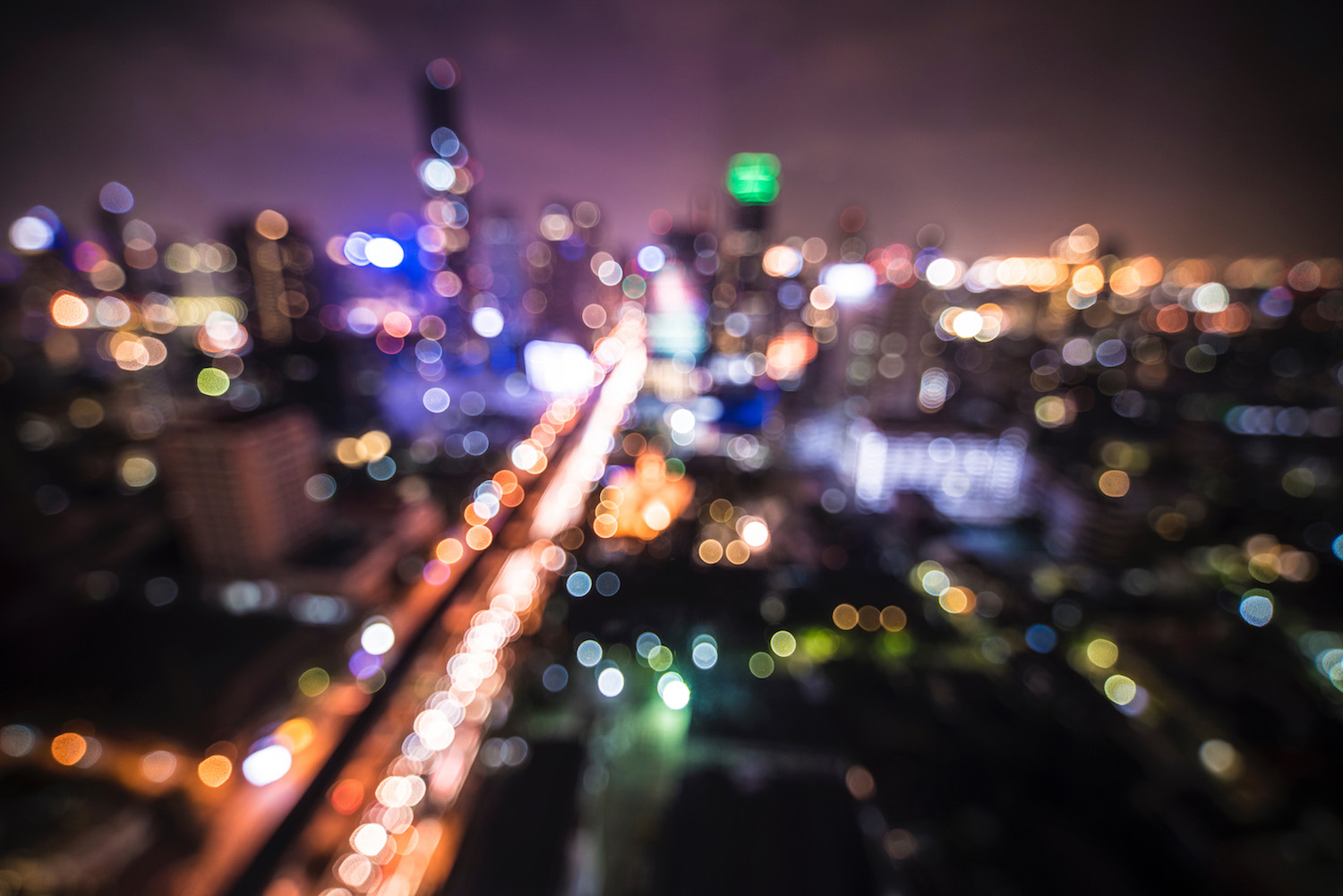I’ve been to Thailand many times now and love it. I’ll never forget my first trip to Bangkok. It was February 18, 2010, and I’d made an unplanned stop there when my camera went kaput in the islands. Having been advised to skip Bangkok by most people I knew, I didn’t expect much from the Thai capital. The bus ride up—I was sitting next to a ladyboy with the same haircut as Kate Gosselin, who was still culturally relevant at that time—seemed prophetic, however.
To be sure, I fell in love with Bangkok as fast as America fell out of love with “John & Kate Plus 8”: The simultaneous freedom and fearfulness I felt upon riding a motorbike for the first time; supernaturally beautiful people in the massive cosmetics ads strobing on screens everywhere I looked; fluorescent taxi cabs strobing through busy streets; the way the synchronicity of the iPad Thai sellers’ clanking woks and the click of high heels on the sidewalk and the honking of horns seemed to recur in rhythm like a pulse.
And how, when walking down a street filled with gun shops—of all the types of shops on can find in the City of Angels, the English-language translation of Bangkok’s Thai name Krungthep Mahanakhon—I started having past-life regressions.
(I don’t even believe in that shit.)
I’ve been back to Bangkok more than a dozen times since, and while I’m embarrassed to say I still can’t speak Thai, I’ve amassed a level of expertise about the city that impresses even locals. My recommendations for three days in Bangkok are not exhaustive—how could they be, in a city as vast and ever-changing as this?—but they are exceptional.
Where to Stay in Bangkok?
Colloquially, Bangkok is one of the cheapest places in the world to get a five-star hotel, although the status quo of the city’s (excellent) hotels is more nuanced than that. If you do want true luxury, stay in one of two Bangkok hotels—SO Sofitel Bangkok and Eastin Grand Hotel Sathorn—that always make me feel like royalty. Diamond City Hotel, on the other hand, offers a central location and warm service with less opulence and at a lower price. Want to stay along Bangkok’s picturesque Chao Phraya River? Splurge on a suite at Anantara Riverside Bangkok Resort.
Day One: City of Life
Your three days in Bangkok will either precede or follow a trip through Thailand (and, probably, the rest of Southeast Asia), so rather than immediately ducking into the first temple you see, take a day to explore Bangkok’s futuristic core. The best introduction to this is riding the ultra-modern BTS SkyTrain to central Siam station, where you can either get off and explore the over-the-top shopping centers nearby (CentralWorld, by some measures, is one of the largest malls in the world), or continue on toward even more fascinating locales.
One option is to walk eastward out of the station through the aptly-named SkyWalk, which gives you a lofty view of busy central Bangkok, with views of the Baiyoke Sky Tower to your left and the ancient Erawan Shrine to your right. Continuing this way, whether by foot or via SkyTrain, takes you to Sukhumvit Road, a picturesque daytime spot that’s truly wild at night—try Soi Cowboy on for size.

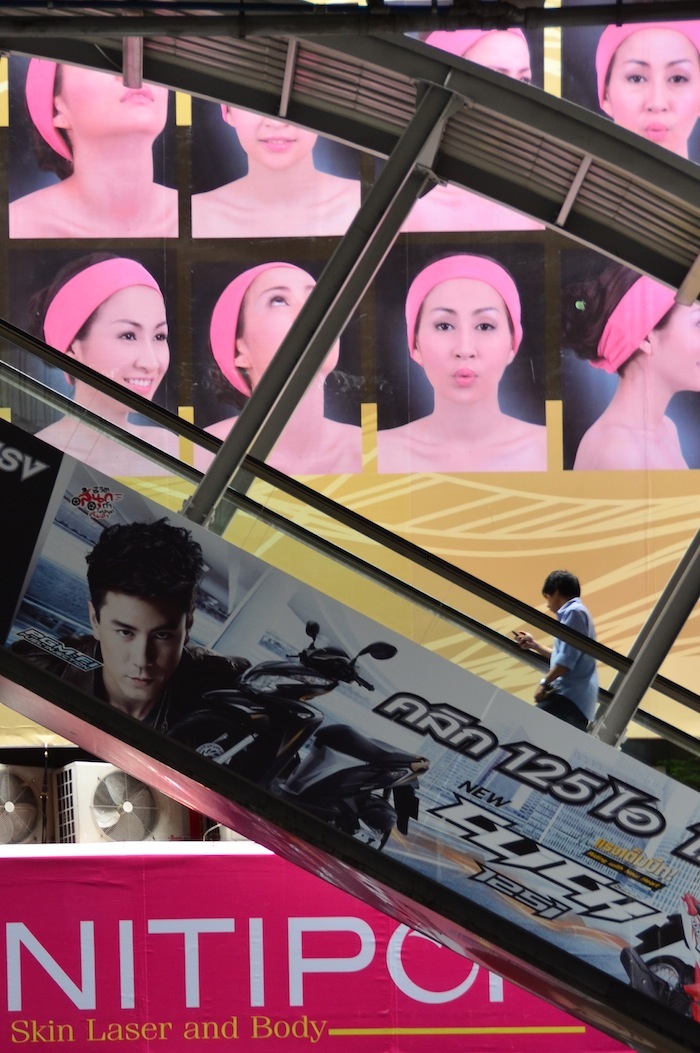

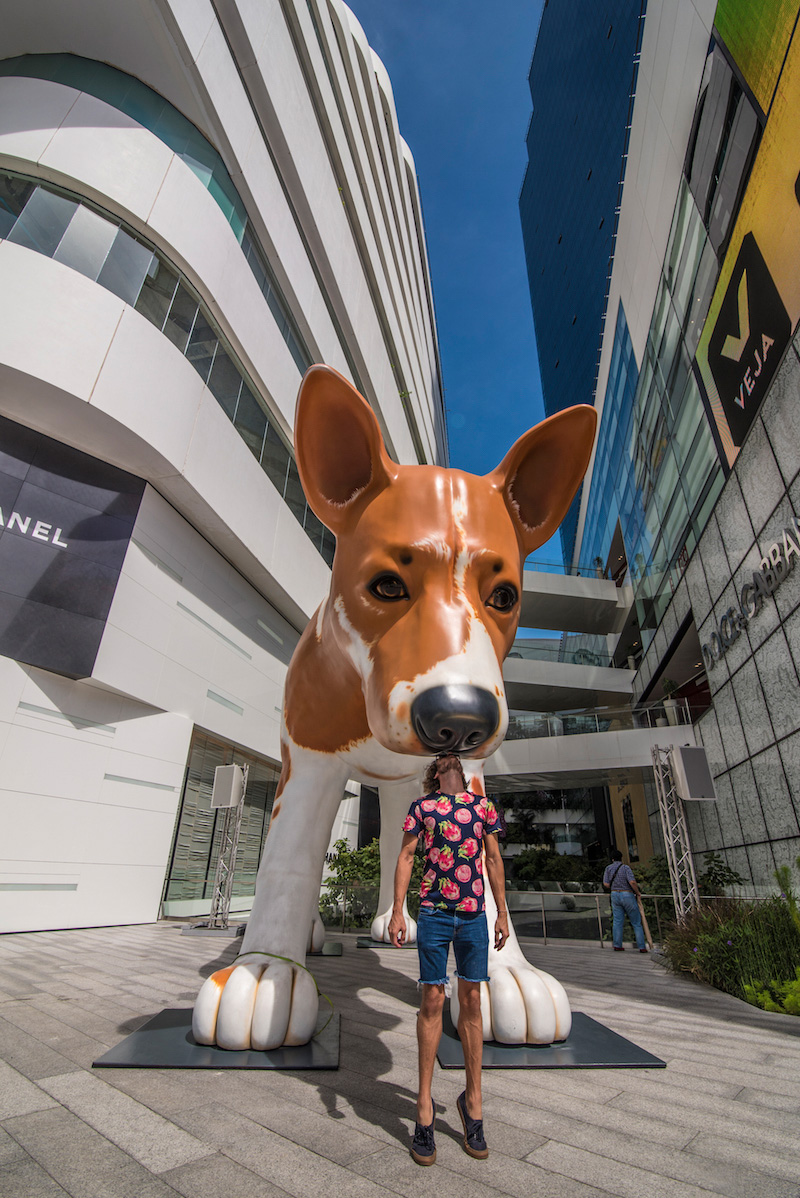
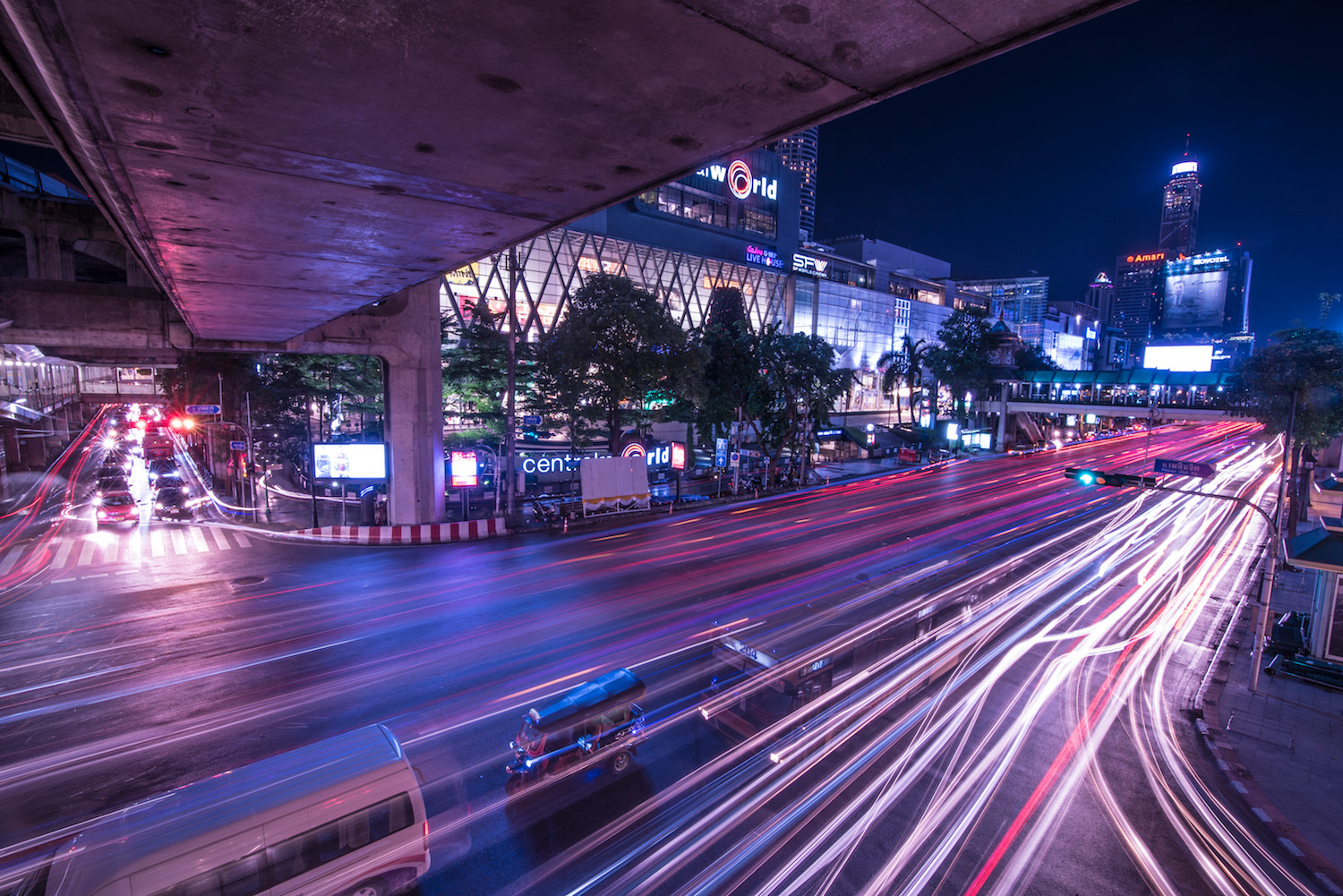
If you do want to see a temple during your day in Bangkok’s de-facto “new city,” I can recommend a couple: Wat Hua Lamphong, located between Silom and Bangkok’s train station of the same name; or Wat Pathum Wanaram, which is only a stone’s throw from Siam station and the MBK Center fake market. Another worthwhile historical stop in central Bangkok is the Jim Thompson House, where you can learn the (shady) story of the American who started Thailand’s modern silk industry.
Day Two: A River Runs Through It
You probably noticed that I didn’t mention a word about food in the first section, and I have two explanations for this: Number one, that delicious food is on every street corner and in every mall food court in Bangkok; and number two, because I’ll be recommending a doozy of a restaurant at the end of this section. But I digress.
Wake up early this morning and ride the SkyTrain to Saphan Taksin station, where you’ll disembark and board a boat headed north along the Chao Phraya River. Ride it five stops to Memorial Bridge, then cross over the bridge and walk toward to the bizarre-looking white temple in the distance. This is Wat Prayoon, and it’s the first of several amazing sights you can enjoy on the west bank of the river, also known as Thonburi: Santa Cruz Catholic Church, an unnamed Chinese shrine; Wat Kalayanamitr and Wat Arun, also known as the Temple of Dawn.
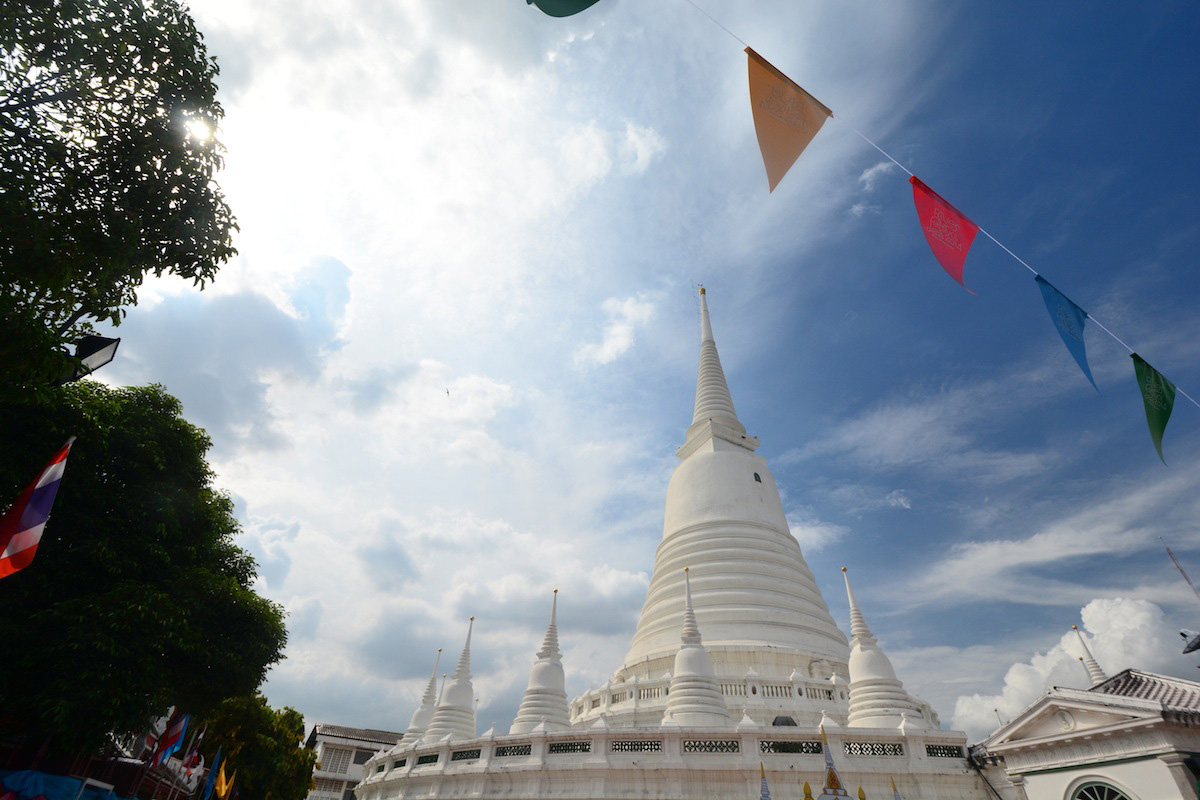
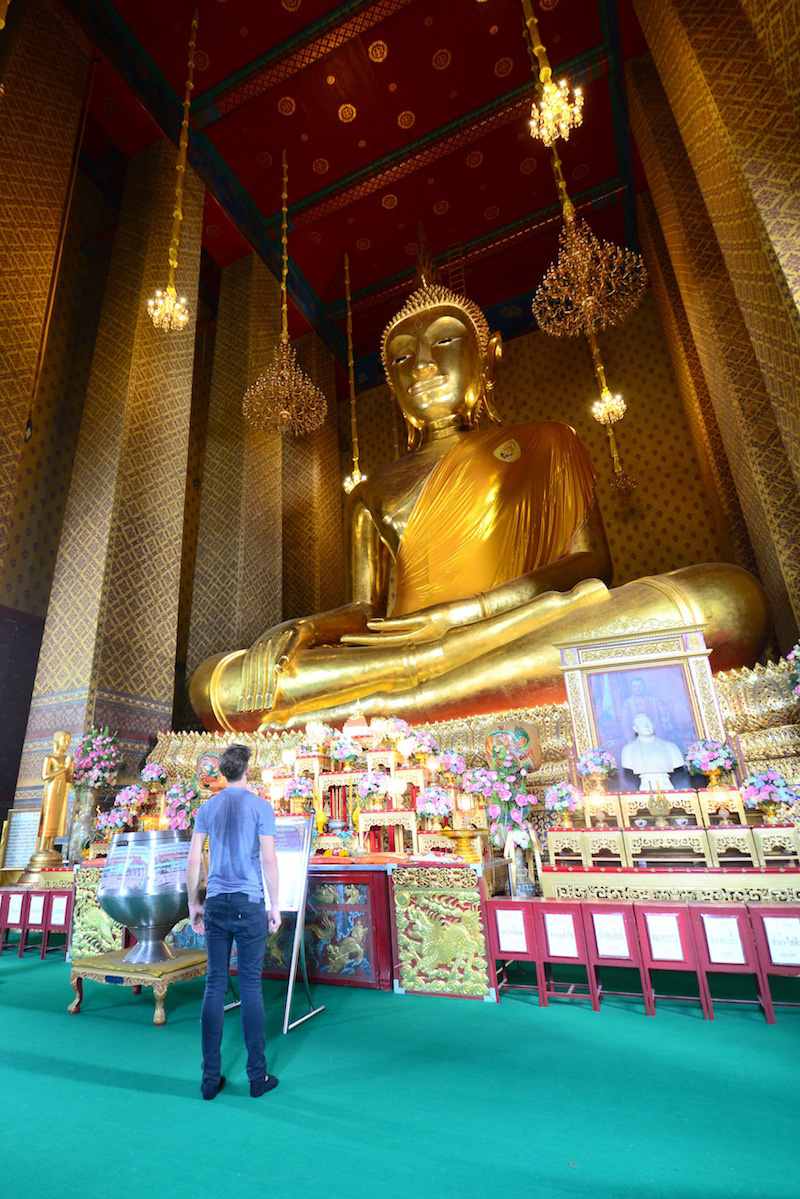
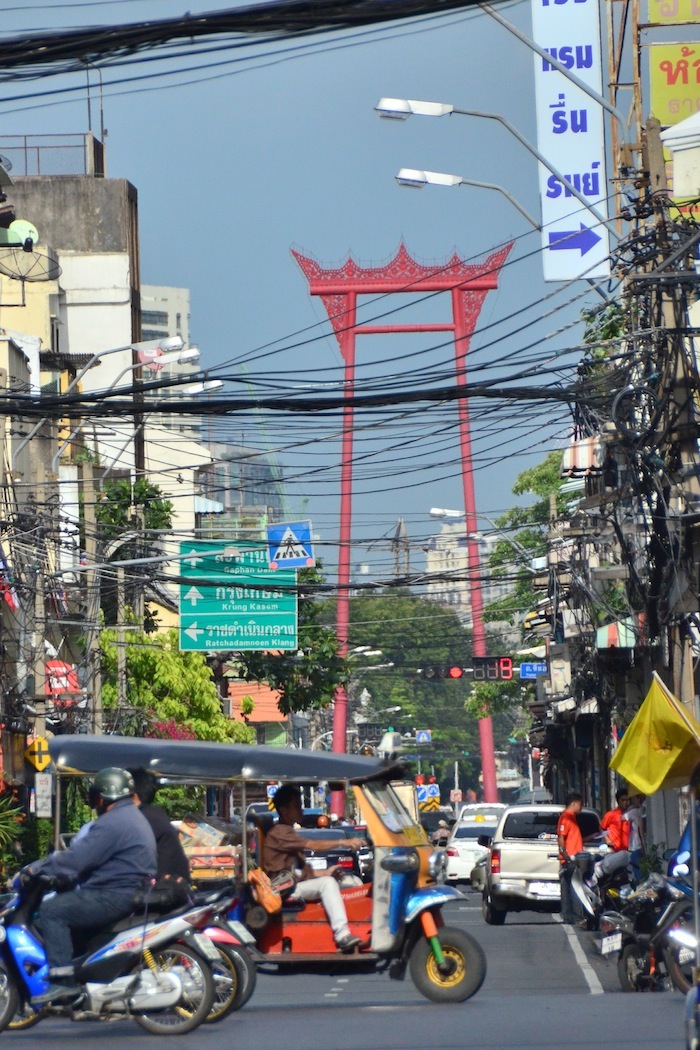
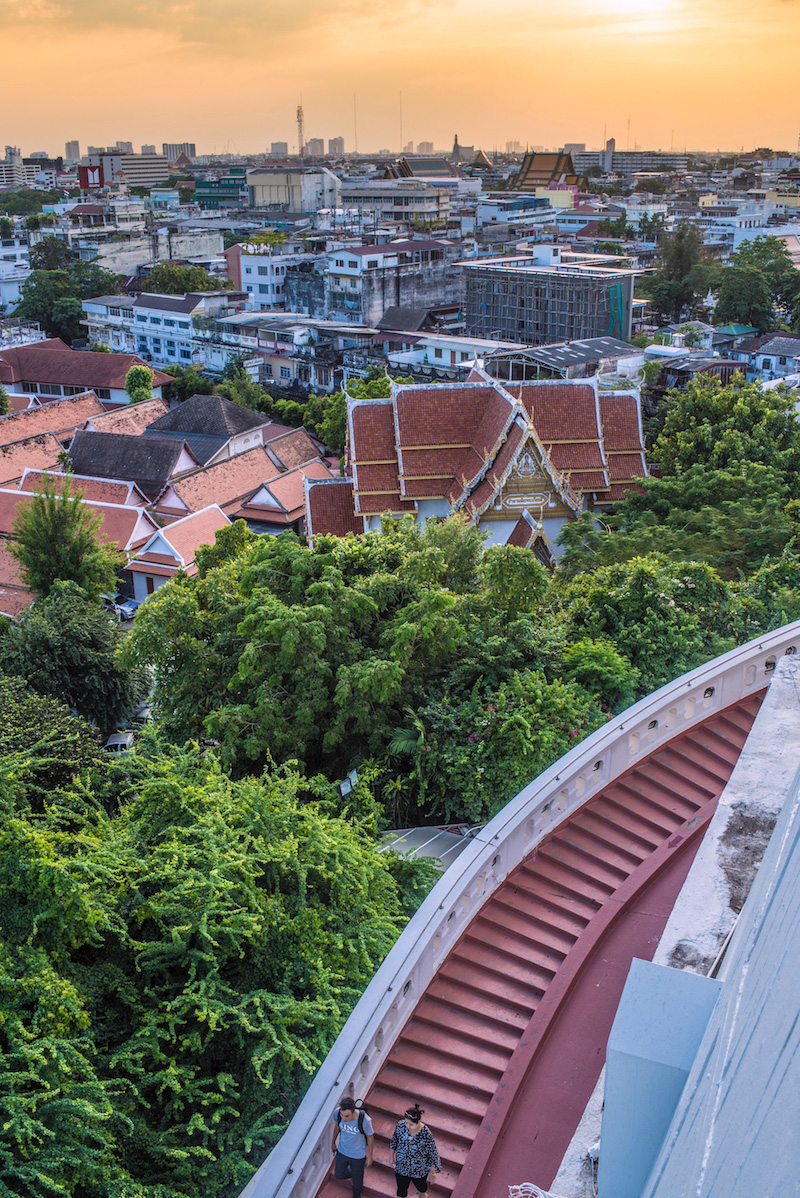
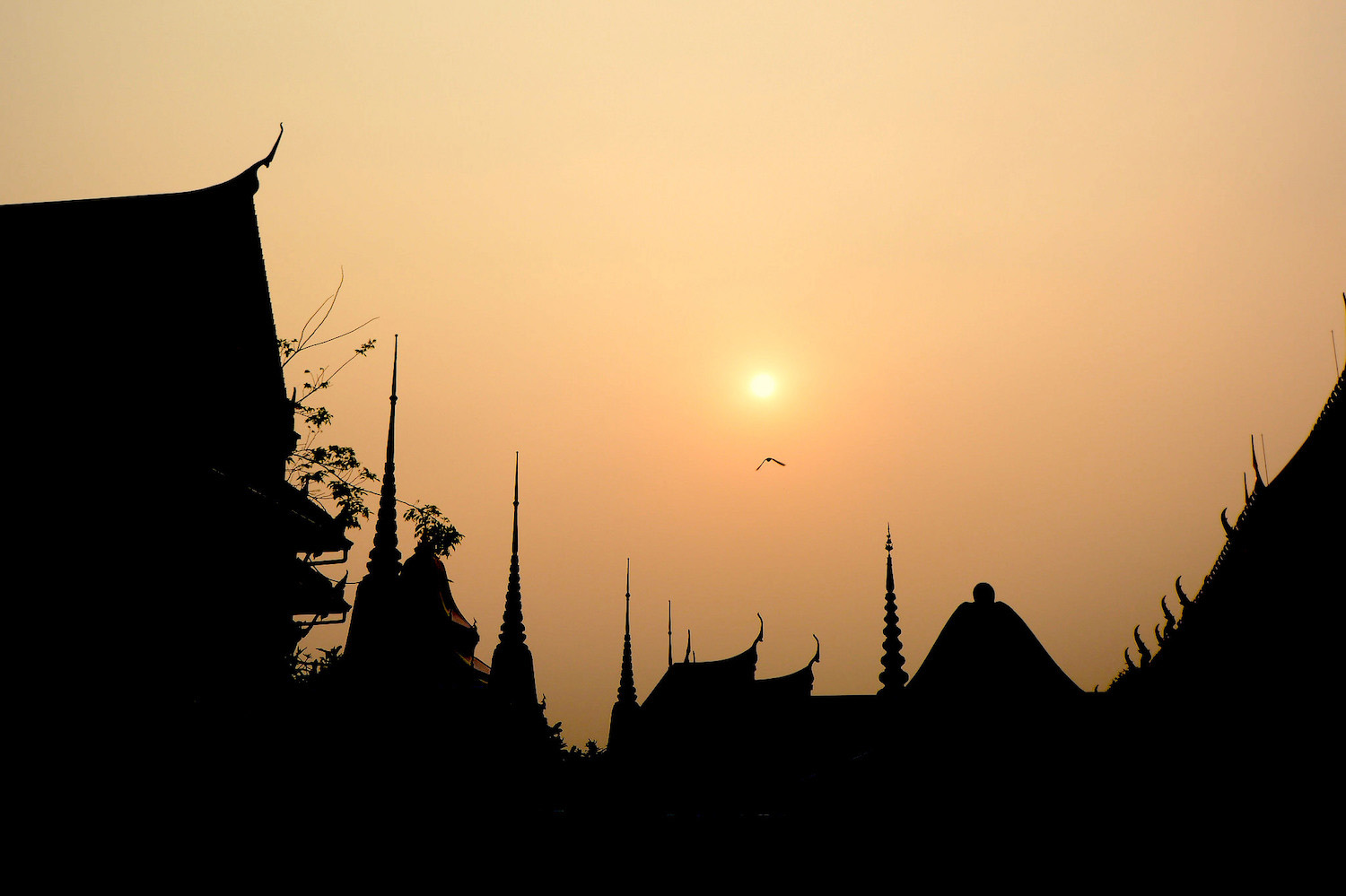
From Wat Arun, ride a shuttle boat across the river to the ancient city of Rattanakosin and Wat Pho, Temple of the Reclining Buddha. If it’s still early when you finish here (say, before lunchtime) head south along the river into Yaowarat, Bangkok’s Chinatown. En route to Chinatown, which is as filled with temples as shrines as it is Chinese-Thai fusion cuisine, stop at Pak Khlong Talat, a massive 24-hour flower market. If it’s not so early, hail a tuk-tuk first to Wat Suthat and its surreal-looking Giant Swing, then to Wat Saket, a.k.a. the Golden Mount, which is the perfect place to catch a Bangkok sunset.
After sunset, get a tuk-tuk to Maharaj Pier, where you can catch a shuttle boat to Supatra River House, an authentic Thai restaurant that offers views of the river and the Grand Palace (which, not un-coincidentally, I have recommended you visit—it’s expensive and crowded and better seen from afar). Afterwards, head back over the river and get a taxi back to your hotel, or—if you dare—a tuk-tuk to the foreigner-filled Khao San Road, a raucous if inauthentic place to party.
Day Three: Get Out of Town—Or Don’t
As a megacity of over 10 million, Bangkok is definitely somewhere you could spend much more than three days exploring. On the other hand, it’s also near some of the world’s best day-trip destinations, so I’m going to outline options for your third of three days in Bangkok that involve both staying in town and getting out of it.
If your three days in Bangkok happen to fall on a weekend, ride the SkyTrain northward to Mo Chit station, home to the massive Chatuchak Weekend Market. If they don’t, but you still want to experience some priceless Thai kitsch, instead ride the SkyTrain to Chong Nonsi station and walk two minutes to the Unicorn Café, which is every bit as fabulous as it sounds.
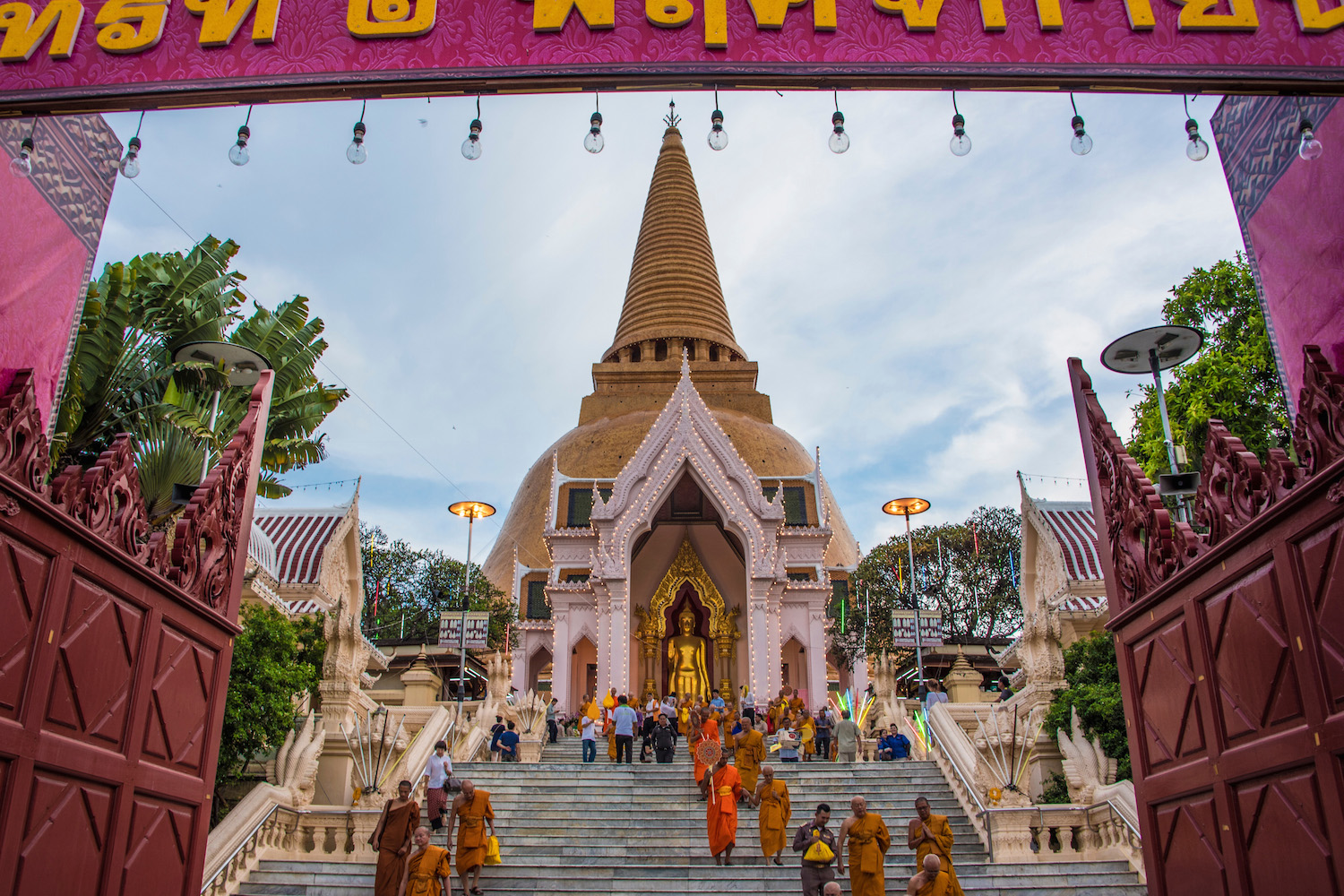

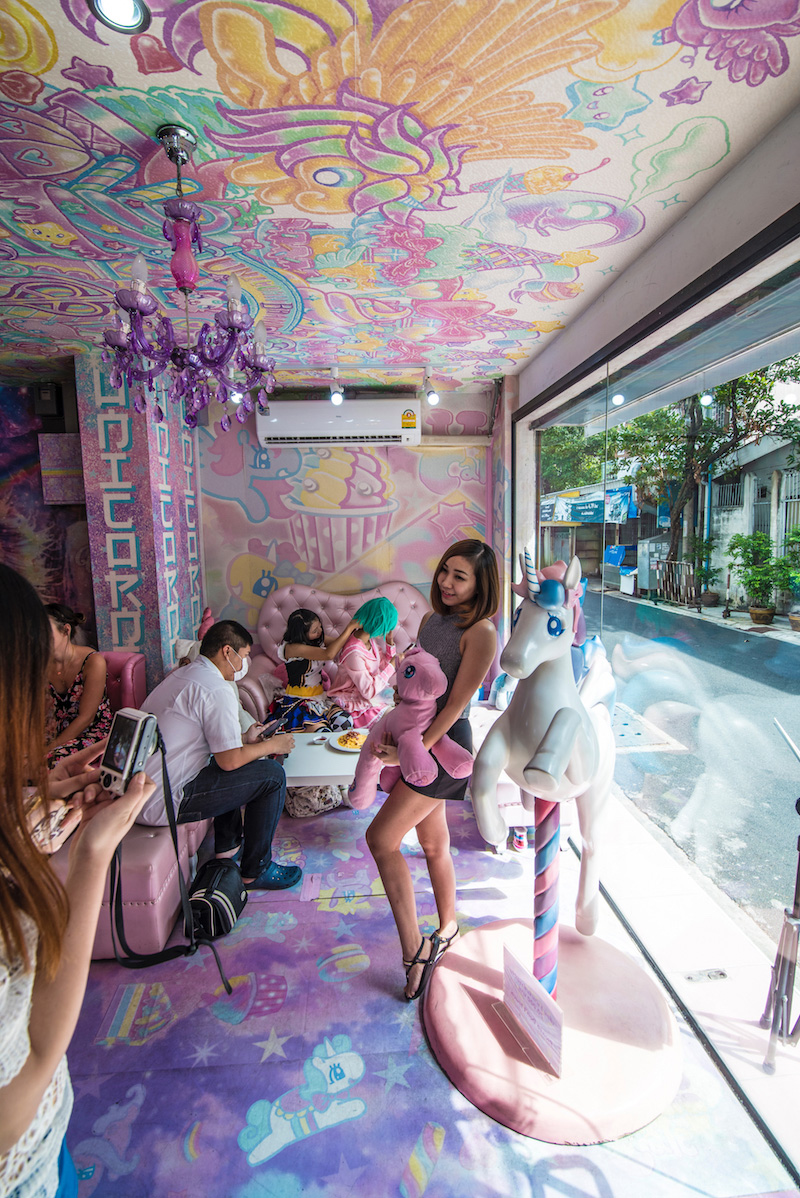

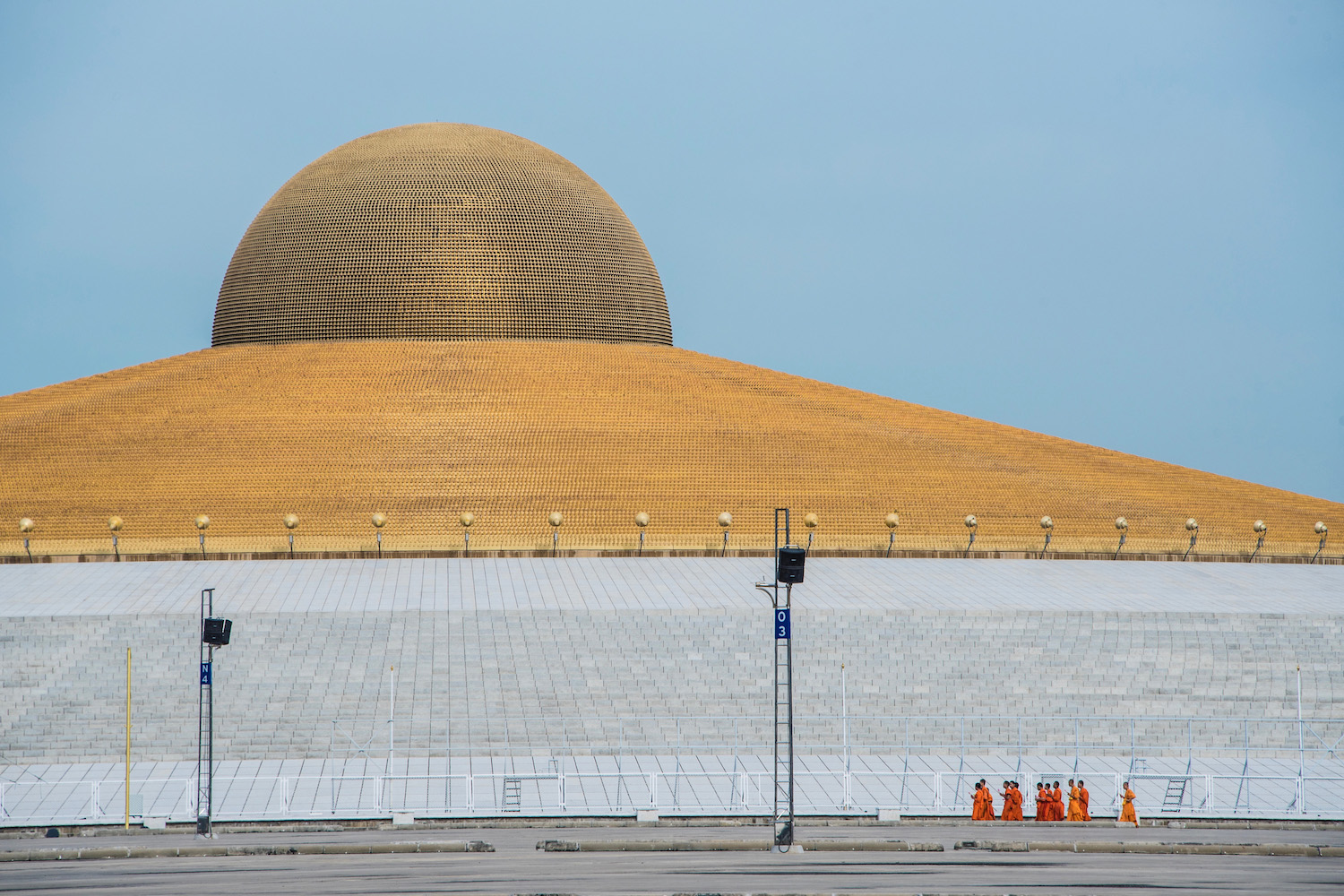
Several options for actually getting out of the city exist. The first is to head to the aforementioned Hua Lamphong railway station and catch one of the semi-frequent departures to Nakhon Pathom, a small-ish city to the south and west of Bangkok that’s home to a massive Buddhist chedi. Or, ride the train to Ayutthaya, an ancient city that feels much farther away than it is.
Alternatively, get an Uber (trains don’t go all the way there most taxis will refuse to take you so far) to Wat Phra Dhammakaya, the world’s largest temple and also, a very controversial one. Yet another option is to take a mini-bus from exit 4 of the Victory Monument BTS station, and ride it to Amphawa Floating Market and/or Maeklong Railway Market.
Conclusion
Three days in Bangkok is only enough to fully experience Thailand’s capital if you spend dozens of three-day periods here, but following these instructions even once will leave you more than satisfied. Spend the first day exploring futuristic central Bangkok, the second in the old cities of Thonburi and Rattanakosin and the third getting out of town—or not.

Robert Schrader is a travel writer and photographer who’s been roaming the world independently since 2005, writing for publications such as “CNNGo” and “Shanghaiist” along the way. His blog, Leave Your Daily Hell, provides a mix of travel advice, destination guides and personal essays covering the more esoteric aspects of life as a traveler.

